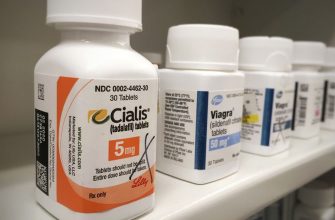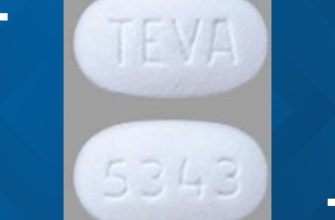Consider low-dose doxycycline as a potential treatment option for acne. This approach often involves daily doses significantly lower than those used for bacterial infections, typically ranging from 20-40mg. This strategy minimizes potential side effects while still providing acne-fighting benefits.
Many dermatologists prescribe low-dose doxycycline for its anti-inflammatory properties. Inflammation plays a key role in acne development; reducing inflammation directly tackles a core aspect of the problem. This mechanism of action differentiates it from other acne treatments that primarily focus on reducing bacteria.
Remember to consult your dermatologist before starting any new medication, including low-dose doxycycline. They can assess your specific skin type, acne severity, and medical history to determine if this treatment is suitable and safe for you. They will also discuss potential side effects and interactions with other medications you may be taking. Regular follow-up appointments allow for monitoring treatment progress and adjustments as needed. A personalized approach ensures optimal results.
While low-dose doxycycline can be highly beneficial, it’s not a standalone solution for everyone. Your dermatologist may recommend combining it with topical treatments like retinoids or benzoyl peroxide for a more comprehensive approach. This combination strategy often yields superior results compared to using either treatment alone. Always adhere to your dermatologist’s recommendations for optimal efficacy and safety.
- Low Dose Doxycycline for Acne: A Detailed Guide
- What is Low Dose Doxycycline and How Does it Work for Acne?
- Benefits and Effectiveness of Low Dose Doxycycline Compared to Higher Doses
- Potential Side Effects and Risks of Low Dose Doxycycline
- Who is a Suitable Candidate for Low Dose Doxycycline Treatment?
- How to Take Low Dose Doxycycline Effectively and Safely
- Protecting Your Gut
- Sun Sensitivity
- Medication Interactions
- Monitoring for Side Effects
- Completion of Treatment
- Alternatives to Low Dose Doxycycline for Acne Treatment
- Oral Medications
- Lifestyle Changes
- When to Consult a Dermatologist Regarding Low Dose Doxycycline
- Signs Requiring Immediate Consultation:
- Addressing Medication Interactions:
Low Dose Doxycycline for Acne: A Detailed Guide
Doxycycline, at low doses (typically 40-100mg daily), effectively combats acne by reducing inflammation and bacterial load. This approach often minimizes side effects compared to higher doses.
This treatment typically requires consistent use for several months to see significant improvement. Expect to notice a reduction in inflammation and lesion count within a few weeks, though complete clearing may take longer. Patience is key.
Remember to discuss potential interactions with other medications you are taking with your dermatologist. Some antibiotics can interact negatively with certain medications, so transparency is paramount.
Sun sensitivity is a common side effect of doxycycline. Protect your skin from the sun using sunscreen with a high SPF (at least 30) and protective clothing. Limit sun exposure, especially during peak hours.
Gastrointestinal issues like nausea and upset stomach can occur. Consider taking doxycycline with food to mitigate this. If side effects persist or worsen, consult your doctor immediately.
| Potential Side Effect | Frequency | Mitigation Strategies |
|---|---|---|
| Sun Sensitivity | Common | High SPF sunscreen, protective clothing, limit sun exposure |
| Nausea/Upset Stomach | Moderate | Take with food, avoid alcohol |
| Yeast Infections (in women) | Possible | Discuss preventative measures with your doctor |
Low-dose doxycycline is often used as part of a broader acne treatment plan that may also include topical treatments like retinoids or benzoyl peroxide. Your dermatologist can help you create a personalized regimen tailored to your specific needs and skin type.
Regular check-ups with your dermatologist are crucial to monitor progress and adjust your treatment plan if necessary. This ensures optimal results and allows for early detection of any potential issues.
While generally safe, doxycycline isn’t suitable for everyone. Pregnant or breastfeeding women, individuals with certain liver or kidney conditions, or those allergic to tetracyclines should avoid this medication. Always consult your doctor before starting any new medication.
What is Low Dose Doxycycline and How Does it Work for Acne?
Low-dose doxycycline typically refers to a daily dosage of 40-100mg, significantly lower than the doses used for treating bacterial infections. It works differently for acne than for bacterial infections.
For acne, low-dose doxycycline primarily reduces inflammation. Inflammation is a key driver of acne breakouts, causing redness, swelling, and pain. Doxycycline achieves this by targeting inflammatory pathways within the skin.
Additionally, low-dose doxycycline demonstrates some anti-bacterial properties. While not as potent as higher doses, it still helps control Cutibacterium acnes (formerly Propionibacterium acnes), a bacteria commonly associated with acne development. This anti-bacterial effect complements its anti-inflammatory action.
It’s important to note that low-dose doxycycline is often used as part of a comprehensive acne treatment plan. It’s frequently combined with topical treatments like retinoids or benzoyl peroxide for optimal results. Your dermatologist can create a personalized plan based on your skin type and acne severity.
Remember to discuss any potential side effects and interactions with your doctor before starting any medication, including low-dose doxycycline. Regular follow-up appointments with your dermatologist will help monitor treatment progress and make necessary adjustments.
Benefits and Effectiveness of Low Dose Doxycycline Compared to Higher Doses
Studies suggest lower doses of doxycycline (e.g., 40mg daily) can be just as effective as higher doses (e.g., 100mg daily) for treating acne. This means you may achieve similar acne reduction with a smaller dosage.
A key advantage of low-dose doxycycline is reduced risk of side effects. Higher doses increase the likelihood of gastrointestinal issues like nausea, diarrhea, or yeast infections. Lower doses mitigate these risks, allowing for improved tolerability.
Antibiotic resistance is a growing concern. Prescribing lower doses, when clinically appropriate, can help slow the development of resistant bacterial strains. This promotes long-term efficacy of this treatment option.
Cost savings are another potential benefit. A lower dose prescription translates directly to lower medication costs over the course of treatment.
However, individual responses vary. A dermatologist should determine the optimal dosage based on your specific condition and medical history. They’ll consider factors such as acne severity and your overall health before deciding on a course of treatment.
Potential Side Effects and Risks of Low Dose Doxycycline
While low-dose doxycycline is generally well-tolerated, some side effects are possible. These are usually mild and temporary, but knowing what to watch for is important.
- Gastrointestinal Issues: Nausea, vomiting, or diarrhea are common. These usually subside as your body adjusts to the medication. Consider taking doxycycline with food to minimize these effects. If symptoms persist or worsen, contact your doctor.
- Photosensitivity: Doxycycline can increase your skin’s sensitivity to sunlight. Use sunscreen with an SPF of 30 or higher, wear protective clothing, and limit sun exposure, especially during peak hours.
- Yeast Infections: Doxycycline can disrupt the natural balance of bacteria in the body, potentially leading to yeast infections. Monitor for any unusual vaginal discharge or oral thrush.
- Medication Interactions: Doxycycline can interact with certain medications, including antacids, some antibiotics, and oral contraceptives. Always inform your doctor about all medications, supplements, and herbal remedies you are taking.
- Rare but Serious Side Effects: Although rare, severe allergic reactions, including swelling of the face, lips, tongue, or throat, can occur. Seek immediate medical attention if you experience these symptoms. Other rare side effects include liver problems and increased pressure in the brain. Consult your doctor if you experience unusual fatigue, jaundice (yellowing of the skin or eyes), severe headache, or vision changes.
Before starting low-dose doxycycline for acne, discuss potential risks and benefits with your dermatologist. They can help you weigh the potential side effects against the expected improvement in your acne. Regular check-ups allow for monitoring and early detection of any problems.
- Always follow your doctor’s instructions precisely regarding dosage and duration of treatment.
- Report any unusual symptoms to your doctor immediately.
Who is a Suitable Candidate for Low Dose Doxycycline Treatment?
Generally, adults with moderate to severe acne unresponsive to topical treatments are good candidates. Specifically:
- Individuals with inflammatory acne (papules, pustules, nodules, cysts).
- Those experiencing acne breakouts affecting their self-esteem or causing emotional distress.
- Patients whose acne significantly impacts their daily life.
However, certain factors may make low-dose doxycycline less suitable:
- Pregnancy or breastfeeding: Doxycycline should be avoided during pregnancy and breastfeeding due to potential harm to the fetus or infant.
- Known allergy to tetracyclines: Prior allergic reaction necessitates alternative treatment.
- Severe renal or hepatic impairment: Dosage adjustments may be necessary, or the drug may be contraindicated.
- Use of other medications with potential interactions: Inform your doctor about all medications you take.
- Children under 8 years old: Doxycycline is generally not recommended for this age group due to the risk of tooth discoloration.
Before starting low-dose doxycycline, a dermatologist will conduct a thorough assessment of your skin and medical history to determine if you’re a suitable candidate and to discuss potential risks and benefits.
Remember, this information is for general knowledge and does not replace a consultation with a healthcare professional. Always discuss treatment options with a dermatologist to create a personalized acne management plan.
How to Take Low Dose Doxycycline Effectively and Safely
Always follow your dermatologist’s instructions precisely. Typical low-dose regimens involve taking 40-100mg once daily, usually at the same time each day, often with food to minimize stomach upset. Consistency is key; missing doses reduces efficacy.
Protecting Your Gut
Doxycycline can disrupt gut bacteria. Consider taking a probiotic alongside your medication to help maintain healthy gut flora. Also, drink plenty of water throughout the day; this aids absorption and helps prevent dehydration, a common side effect.
Sun Sensitivity
Low-dose doxycycline increases sun sensitivity. Use a broad-spectrum sunscreen with an SPF of 30 or higher daily, even on cloudy days. Wear protective clothing, like hats and long sleeves, when spending time outdoors, especially during peak sun hours.
Medication Interactions
Inform your doctor about all medications you’re taking, including over-the-counter drugs and supplements. Some medications can interact negatively with doxycycline. This includes antacids, which can reduce absorption. Space out antacid and doxycycline intake by at least two hours.
Monitoring for Side Effects
Common side effects include nausea, vomiting, diarrhea, and yeast infections. Less common, but serious, side effects include severe allergic reactions (like difficulty breathing or swelling). Report any concerning side effects to your doctor immediately.
Completion of Treatment
Complete the full course of doxycycline prescribed by your dermatologist, even if your acne clears up sooner. Stopping early can lead to antibiotic resistance and recurrence of acne.
Alternatives to Low Dose Doxycycline for Acne Treatment
Consider topical retinoids like tretinoin or adapalene. These are vitamin A derivatives that unclog pores and reduce inflammation. Apply them as directed by your dermatologist; start slowly to minimize irritation.
Benzoyl peroxide is another topical option. It kills acne-causing bacteria and reduces inflammation. Look for products with a concentration between 2.5% and 10%. Daily use is generally recommended.
Oral Medications
Isotretinoin, a stronger oral medication, is highly effective but requires careful monitoring by a dermatologist due to potential side effects. Your doctor will assess your suitability for this treatment.
Oral antibiotics other than doxycycline, such as minocycline or erythromycin, are also available but should be used under medical supervision, as prolonged use can lead to antibiotic resistance.
Lifestyle Changes
Maintaining a consistent skincare routine, including gentle cleansing and moisturizing, can significantly improve acne. Avoid harsh scrubbing, which can irritate the skin.
Dietary changes may help some individuals. Reducing dairy intake or focusing on a low-glycemic diet are potential strategies, though research is ongoing. Always discuss dietary changes with your doctor or a registered dietitian.
When to Consult a Dermatologist Regarding Low Dose Doxycycline
Schedule an appointment if your acne doesn’t improve after 8-12 weeks of consistent low-dose doxycycline use. This timeframe allows for sufficient assessment of treatment efficacy.
Signs Requiring Immediate Consultation:
Contact your dermatologist immediately if you experience any of the following: severe stomach pain, persistent nausea or vomiting, difficulty swallowing, unusual vaginal discharge, yellowing of skin or eyes (jaundice), severe allergic reactions (rash, swelling, difficulty breathing).
Also, seek advice if you notice new or worsening symptoms, like increased acne inflammation or development of new lesions. Your doctor can adjust your treatment plan or explore alternative options.
Regular follow-up appointments are valuable for monitoring progress and managing potential side effects. Your dermatologist will assess your response and make necessary adjustments to your medication or treatment strategy.
Addressing Medication Interactions:
Discuss any other medications you’re taking with your dermatologist before starting low-dose doxycycline. Certain drugs can interact, potentially affecting efficacy or increasing side effect risk. This proactive approach ensures safe and optimized treatment.






